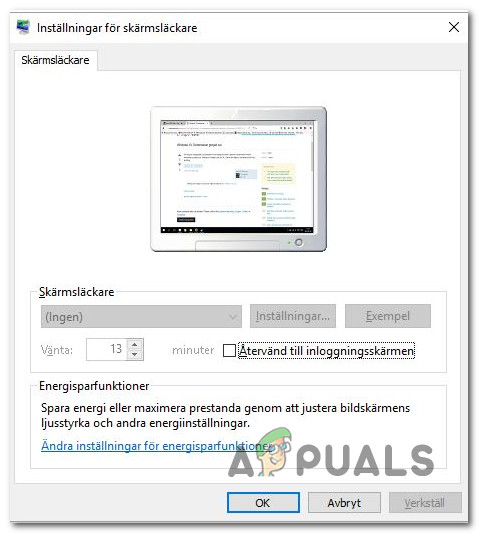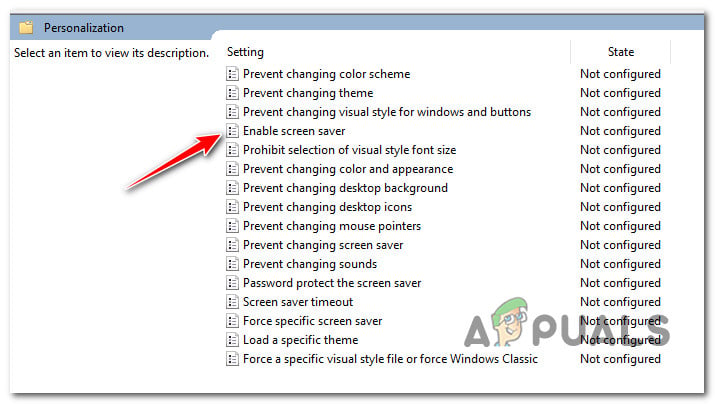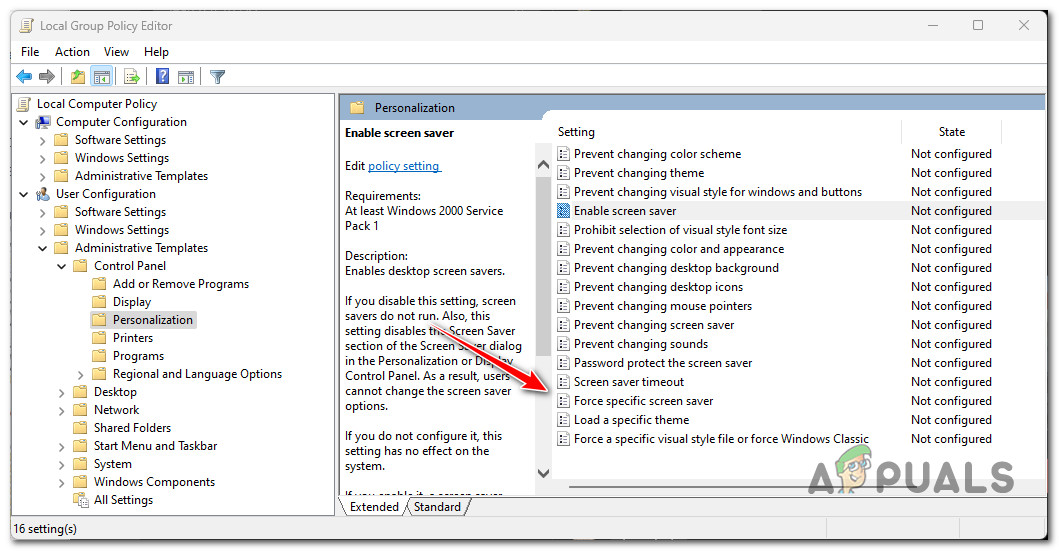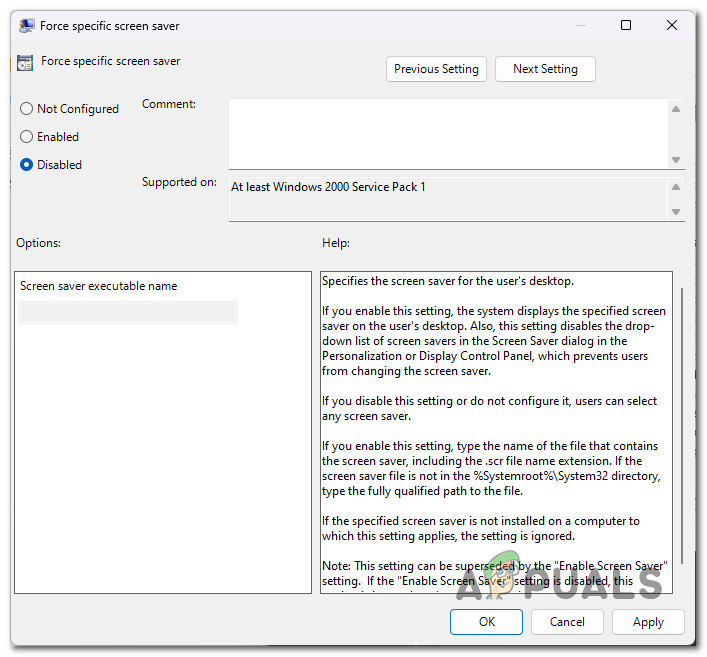After investigating this issue thoroughly, it turns out that this problem only has two potential causes:
The screen saver settings are disabled by a local group policy.The screen saver settings are hardcoded via Registry Editor.
Fortunately, both of these scenarios have an easy fix that will allow you to unblock all the screen-saver settings. More details on the individual methods below.
1. Enable screen saver via Group Policy Editor
If you actively use the gpedit.msc (group policy editor) or your local (or network) administrator does, chances the screen saver settings are disabled by a specific policy. There are two main policies that might cause this behavior on Windows 10 and Windows 11 computers:
“Enable Screen Saver” policy – As long as this policy is enabled, you will not be allowed to enable any screen saver variation (via GUI or terminal commands). On top of this, every screen-saver-related setting will be greyed out inside the Screen Saver settings menu. “Force-specific screen saver” – This policy will force an administrator-selected screensaver on every system part of the network. This also means that every setting inside the Screen Saver Setting menu will be greyed out.
If your system is affected by one of the two policies mentioned above, the only way to fix it is to utilize the Group Policy Editor (gpedit.msc) to disable the policy causing this behavior. Note: Certain Windows editions (Windows Home & Windows Education) will not have this utility installed by default on their systems. If this scenario is applicable, follow this article to install the gpedit.msc utility manually. Follow the instructions below to check (using the Group Policy Editor) if any of the policies mentioned above are causing your screen saver settings to remain greyed out: Important: If you are part of a network, you might be unable to carry this operation from your PC. In certain situations (such as if you’re part of a work or school network), you might need to ask your network administrator to perform the instructions below). If you’re still unable to change your screen saver settings since the options are still greyed out or the policies above we’re already correctly configured, move to the next fix below.
2. Enable screen saver via Registry Editor (Windows 10 Only)
If the method above didn’t work for you and your system is not connected to your domain, the next thing you should attempt to do is reconfigure the behavior of your screen saver settings via Registry Editor. Important: This method will only work on Windows 10. You won’t be able to find the Control Panel key using Registry Editor if you’re using Windows 11. In case the screen saver settings remain greyed out even though you already modified the group policies (by following the method above), there’s a big chance that this behavior is occurring due to one of the following registry values:
SCRNSAVE.EXEScreenSaverIsSecureScreenSaveTimeout
If any of these registry values are hard-coded inside the location below, you won’t be able to adjust them via the GUI menu of Screen Saver settings: To verify if this scenario is applicable, follow the instructions below:
How to Add Photos to Windows Screen Saver on Windows 10How to Go Into And Out of Full Screen Mode on Google ChromeFix: Your Outlook Account Settings Are Out Of Date on Windows 10How to Fix Sync Settings Greyed Out in Windows 10/11?






